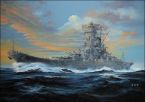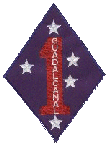Alfred
Posts: 6685
Joined: 9/28/2006
Status: offline

|
quote:
ORIGINAL: dr.hal
quote:
ORIGINAL: Alfred
No, his opponent has very sound real world military praxis considerations to object to a Mersing landing on day 2 of the war commencing.
Time after time, posters with zero relevant military experience or with real understanding of the military considerations which applied at the time, treat the historical leaders as nincompoops who should have done what the AE player, who is gaming the code, can get away with.
Japan very carefully prepared for its opening moves. If it was so simple as landing at Mersing on Day 2 (or for that matter Palembang within week 1), why didn't they do it. The answer is because it made no military sense. One does not send in an invasion force where the enemy has complete air superiority.
At the start of the war every major Japanese landing (which was not intended as a coup de main) was conducted within range of Japanese air cover, and with the intention of gaining developed airfields to support the next move forward. Why do you think Japanese forces landed at Kuantan. Because it was within range of their fighter cover based in Indo-China and it gave them airfields to move down the Malay peninsula towards Singapore. Why did they choose the specific Luzon landing sites. Again for the very same reasons; they were within fighter range of their Formosa airfields and allowed them to move towards Manila.
Add the presence of Force Z, which would have had much better air cover had it only been required to intercept a Mersing landing and no sane military planner would, at any stage, have considered landing there on Day 2, or Day 3, or Day 4 before friendly air cover could be provided.
Real military leaders have to take into account the survivability of their assets, the logistical difficulties of maintaining a combat effective force. They don't have the luxury of ordering 0s and 1s without regard, knowing they can always return to an earlier saved position or simply start the scenario again.
Alfred
Alfred you are absolutely right, air cover is key and certainly the Brits had local air superiority in and around Singapore. However if we are going to play the "variables" game, I've long considered the attack on Pearl to be a dangerous gamble (Yamamoto agrees with me, much to his credit!!!!). So let me posit another view trying to combine realism with gaming. Let's say that the KB hits Manila instead, believing that getting rid of the US Asiatic Fleet (especially it's subs) was a much more immediate concern (not knowing the state of US torpedoes) than the distant BBs or even CVs. This would "cripple" the local American fleet, would also leave the KB in local waters, AND, finally, hopefully not so enrage the American people (the P.I. being "over there") thus allowing for a more promising negotiated peace later down the line. Given this move, I would content that a Mersing landing on Day 2 is possible as the KB could hit the P.I. and then move down to establish local control of the area around Singapore and much needed aircover for a landing. Yes there are risks, and certainly the KB could have been "found" by US patoling AC but I would submit that the outcome would be the same (clearly the US would not conduct a preemptive strike on the KB), a surprise hit on the US fleet and then local control allowing the ability to land further down the Malaysian coast. Thoughts? But baring the abandonment of the hit on Pearl, you're right, I don't think a landing close to Singapore is anything but suicidal for the Japanese on day 2 or anytime soon thereafter. Hal
AE is a game. Therefore players can try unrealistic real world military moves. Just as long as players understand the difference between the two.
As to your hypothetical scenario, I have the following general observations.
Yes, if the KB were present in the area, an early amphibious landing at Mersing was theoretically possible. Doing so would have cut off the bulk of the Allied forces which were up the Malay peninsula, specifically guarding the Allied airfields, which pre-1939 the RAF had assured 10 Downing Street, would be used to house the RAF assets which would defeat the Japanese well before they could threaten Singapore.
However, in 1941 no one viewed aircraft carriers as mobile airfields to support land operations. Aircraft carriers were primarily seen as scouts for the main battle line which of course was comprised of Battleships. USN carriers did not operate on mass, they were scouts. Ditto for the IJN, the difference being that Taranto had shown a surprise attack on docked ships could knock out the enemy battleline. In early C19th warfare, one could use ship of the line (the equivalent of dreadnought battleships) to smash the Danish battle line at Copenhagen. That option was no longer available in 1941. PBYs would have detected the IJN battleships well before they they got to Pearl Harbor. But aircraft carriers, which could launch well out to sea, and even if they were sighted by PBYs, their strike packages would arrive before the docked ships, on a Sunday, could get out to the open sea, that was a different issue.
Next, a KB strike on Day 1 against Manila would not see the KB in position to support a Mersing landing on Day 2. The alternative is to have the KB accompany the Mersing fleet ab initio. We know the Kuantan and Singkang invasion fleets were spotted by Allied naval search before hostilities commenced. An accompanying KB would have also been discovered, and that would have left absolutely no doubt what was about to happen, a troop convoy ferrying IJA units to Bangkok did not need to be screened by the KB. That would have given more time for Operation Matador to take place, and that would have been very, very bad news indeed for Japan.
Yet the main problem with your hypothetical is that it runs counter to Clausewitz, and Mahan. Everyone, and this most definitely applied to Yamamoto, believed that the correct military operational endeavour (whether it was on land or at sea) was to seek and destroy the main enemy force. For the IJN, this was the American battle line, located at Pearl Harbor. It was the underlying rationale for the subsequent 1942 Midway operation. It was embodied in the Decisive Battle Doctrine. It was once again seen in the 1944 Philippine naval planning.
Remember that in December 1941, the Yamato (let alone the Musashi) which was expected to provide the IJN with the capability to stand off and defeat the American battleline, was not available. If they didn't sink them in one stroke at Pearl Harbor, they would be dependent on subs thining out the American fleet as it moved west to sever the Japanese SLOC and confront the Combined Fleet. Battleship against battleship, an intact 1941 USN was superior to the combined Fleet reliant upon "modernised" Battlecruisers and no Yamato class Battleships.
It is not until the Essex class came online that the Americans could dispose of sufficient mobile airpower to invent the new doctrine of carriers supporting long distance invasions, away from land based aircover.
Alfred
|
 Printable Version
Printable Version



















 New Messages
New Messages No New Messages
No New Messages Hot Topic w/ New Messages
Hot Topic w/ New Messages Hot Topic w/o New Messages
Hot Topic w/o New Messages Locked w/ New Messages
Locked w/ New Messages Locked w/o New Messages
Locked w/o New Messages Post New Thread
Post New Thread